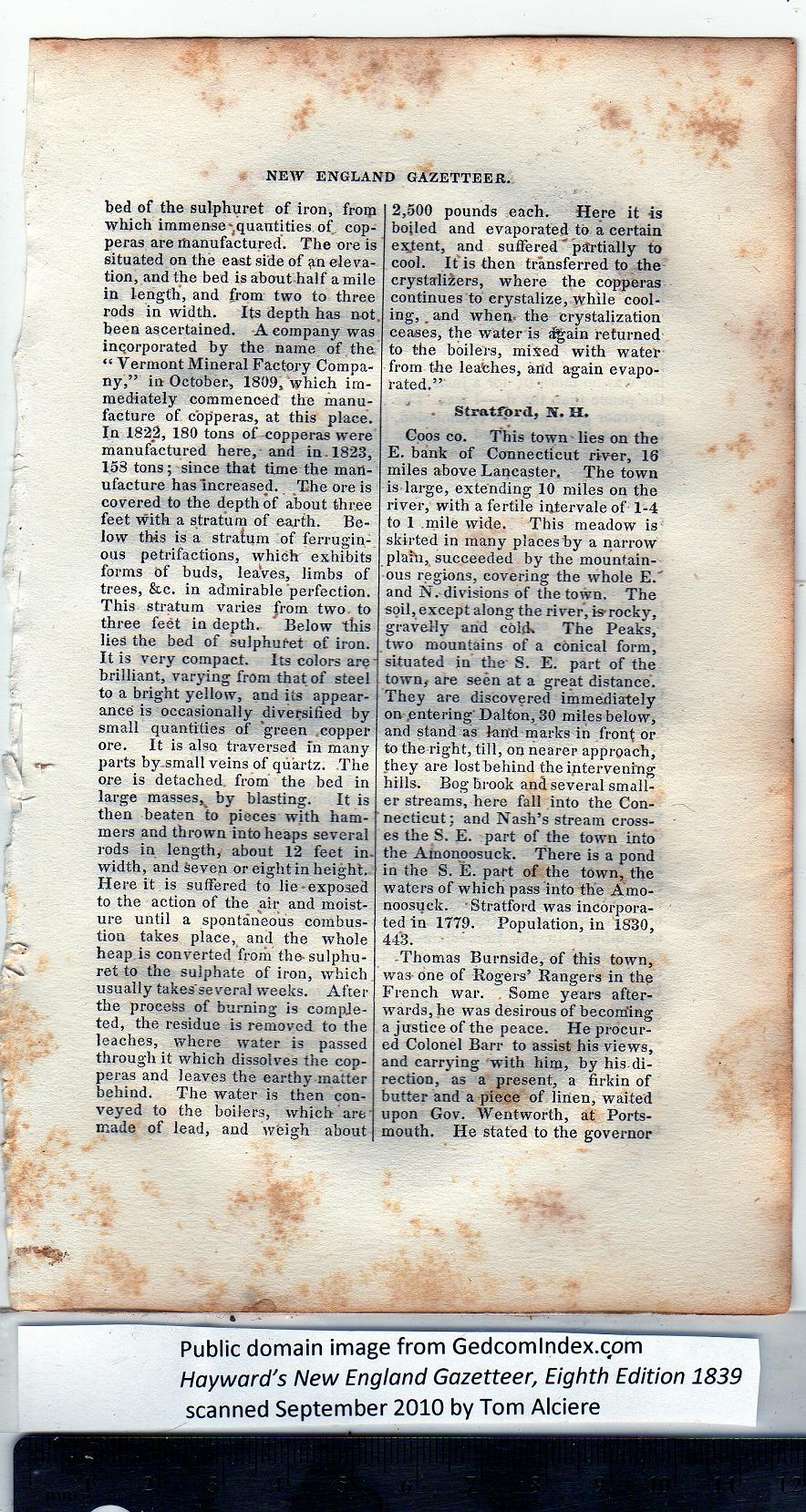|
bed of the sulphuret of iron, from
which immense ^quantities of cop-
peras are manufactured. The ore is
situated on the east side of ^n eleva-
tion, and the bed is about half a mile
in length, and from two to three
rods in width. Its depth has not.
been ascertained. A company was
incorporated by the name of the
“Vermont Mineral Factory Compa-
ny,” in October, 1809, which im-
mediately commenced the manu-
facture of copperas, at this place.
In 1822, 180 tons of copperas were
manufactured here, and in. 1823,
153 tons; since that time the man-
ufacture has increased. The ore is
covered to the depth of about three
feet with a stratum of earth. Be-
low this is a stratum of ferrugin-
ous petrifactions, which exhibits
forms Of buds, JeaVea, limbs of
trees, &c. in admirable perfection.
This stratum varies from two to
three feet in depth. Below this
lies the bed of sulphuret of iron.
It is very compact. Its colors are*
brilliant, varying from that of steel
to a bright yellow, and its appear-
ance is occasionally diversified by
small quantities of 'green copper
ore. It is also traversed In many
parts by small veins of quartz. The
ore is detached from the bed in
large masses,v by blasting. It is
then beaten to pieces with ham-
mers and thrown into heaps several
rods in length, about 12 feet in.
width, and Seven or eight in height.
Here it is suffered to lie-exposed
to the action of the air and moist-
ure until a spontaneous combus-
tion takes place, and the whole
heap is converted from the-sulphu-
ret to the sulphate of iron, which,
usually takes'several weeks. After
the process of burning is comple-
ted, the residue is removed to the
leaches, where water is passed
through it which dissolves the cop-
peras and leaves the earthy matter
behind. The water is then con-
veyed to the boilers, which are
made of lead, and weigh about
2,500 pounds each. Here it is
boiled and evaporated to a certain
extent, and suffered" partially to
cool. It is then transferred to the
crystalizers, where the copperas
continues to crystalize, while cool-
ing, , and when the crystalization
ceases, the water is ^ain returned
to the boilers, mixed with water
from the leafehes, and again evapo-
rated.” |
Stratford, N. H.
Coos co. This town lies on the
E. bank of Connecticut river, 16
miles above Lancaster, The town
is large, extending 10 miles on the
river, with a fertile intervale of 1-4
to 1 mile wide. This meadow is
skirted in many placesby a narrow
plain, succeeded by the mountain-
ous regions, covering the whole E.
and N. divisions of the town. The
soil,except along the river, is-rocky,
gravelly and colds The Peaks,
two mountains of a conical form,
situated in the S. E. part of the
town, are seen at a great distance.
They are discovered immediately
on .entering Dalton, 30 miles below,
and stand as land marks in front or
to the right, till, on nearer approach,
they are lost behind the intervening
hills. Bog hrook and several small-
er streams, here fall into the Con-
necticut; and Nash’s stream cross-
es the S. E. part of the town into
the Amonposuck. There is a pond
in the S. E. part of the town, the
waters of which pass into the Amo-
noosuck. Stratford was incorpora-
ted in 1779. Population, in 1830,
443.
Thomas Burnside, of this town,
wa3- one of Rogers’ Rangers in the
French war. Some years after-
wards, he was desirous of becoming
a justice of the peace. He procur-
ed Colonel Barr to assist his views,
and carrying with him, by his di-
rection, as a present, a firkin of
butter and a piece of linen, waited
upon Gov. Wentworth, at Ports-
mouth. He stated to the governor |
